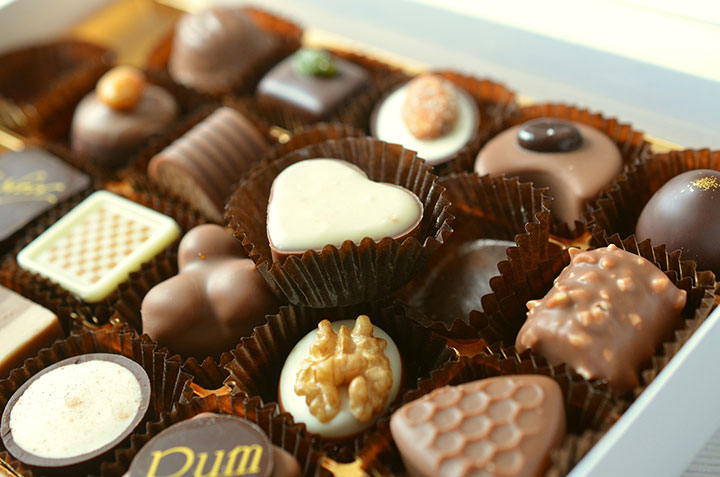For many of us, chocolate is a guilty pleasure, a tool we turn to during times of sadness or simply a random craving. But why exactly does chocolate taste so good and make us feel so good?

First, let’s look at the history of chocolate. While it’s often believed that the Mayans were the first to discover chocolate, anthropologists have found that the pre-Olmec culture living in what today is Mexico, produced it as early as 1900 BCE. They would mix it with water, vanilla, honey and even chili peppers making a chocolate drink. The Mayans later made their own liquid chocolate drink. It didn’t become consumed as a hardened substance until the 1850s.
READ MORE: Science to the rescue—New manufacturing process could lead to low-fat chocolate
But scientists don’t quite understand what makes us crave it so much.
You might be surprised, perhaps even a bit dismayed, to know that chocolate has more than 300 chemicals in it. One of the chemicals is caffeine, though only in small amounts. It also contains another stimulant called theobromine. Put these two together and it makes you feel pretty good.
But there may be another reason. In a 1996 study in the scientific journal Nature, researchers from the Neurosciences Institute in San Diego, linked anandamide to our cravings. Anandamide is a chemical that produces a reaction in our brains similar to the one that comes from smoking marijuana.
When someone smokes pot, a specific receptor in our brain allows a signal to be carried through a cell wall, triggering a reaction — the “high” feeling.
With anandamide, researchers believe a similar process takes place, providing us with a good feeling. In fact, the word originates from “ananda,” Sanskrit for “bliss.”
Another chemical that scientists believe may play a role in that happy feeling we get is phenylethylamine, a chemical that is tied to amphetamines, also strong stimulants.
But it could also have to do with a combination of factors: the stimulants, receptors, and our mouths.
“It’s a science and an art,” said Robert McGorrin, department head at Oregon State Unviersity’s Food Science and Technology department.
In his studies on food, he’s found that various systems play a combined role in how enjoyable or not, a food is.
Think about it: when you have a cold, when your sinuses are stuffed, you taste things differently or not at all. That’s because the “smell” of the food you’re eating goes back up your read sinus cavity, making the experience a culmination of the whole.
Milk, which is included in most chocolate, likely helps. Scientists believe that milk boosts serotonin levels, which in turn help us relax.
What’s more, chocolate contains a lot of sugar and fat, which we tend to like.
“Things that we tend to crave are usually a combination of the two,” McGorrin said.
All of these factors — the chemicals, serotonin release, fat and sugar — combine to make one delicious treat.
“I’m not sure we’ve fully figured it out,” said McGorrin.



Comments